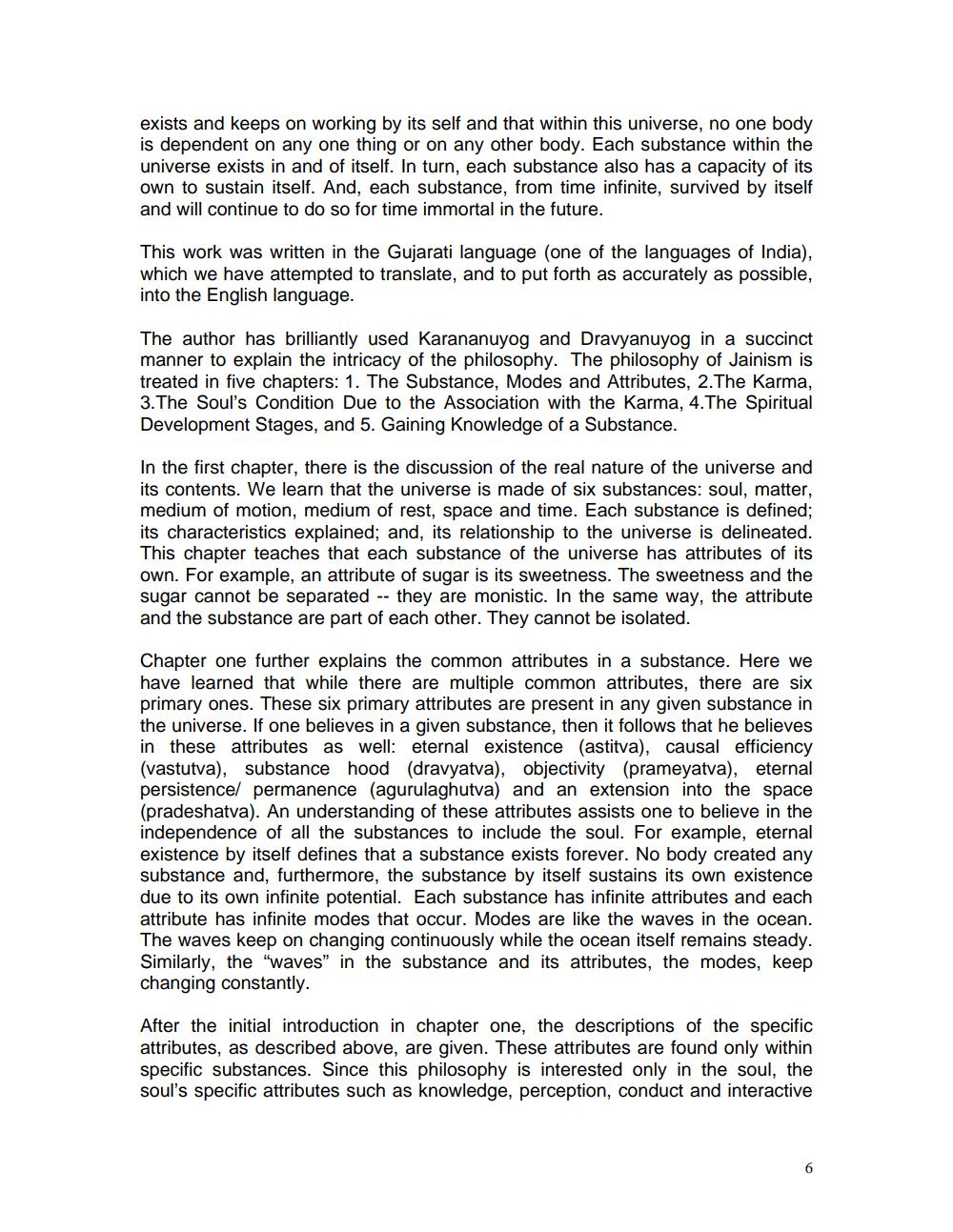Book Title: Primer of Jain Principles Author(s): Kirit Gosalia Publisher: Kirit Gosalia View full book textPage 9
________________ exists and keeps on working by its self and that within this universe, no one body is dependent on any one thing or on any other body. Each substance within the universe exists in and of itself. In turn, each substance also has a capacity of its own to sustain itself. And, each substance, from time infinite, survived by itself and will continue to do so for time immortal in the future. This work was written in the Gujarati language (one of the languages of India), which we have attempted to translate, and to put forth as accurately as possible, into the English language. The author has brilliantly used Karananuyog and Dravyanuyog in a succinct manner to explain the intricacy of the philosophy. The philosophy of Jainism is treated in five chapters: 1. The Substance, Modes and Attributes, 2. The Karma, 3.The Soul's Condition Due to the Association with the Karma, 4. The Spiritual Development Stages, and 5. Gaining Knowledge of a Substance. In the first chapter, there is the discussion of the real nature of the universe and its contents. We learn that the universe is made of six substances: soul, matter, medium of motion, medium of rest, space and time. Each substance is defined; its characteristics explained; and, its relationship to the universe is delineated. This chapter teaches that each substance of the universe has attributes of its own. For example, an attribute of sugar is its sweetness. The sweetness and the sugar cannot be separated -- they are monistic. In the same way, the attribute and the substance are part of each other. They cannot be isolated. Chapter one further explains the common attributes in a substance. Here we have learned that while there are multiple common attributes, there are six primary ones. These six primary attributes are present in any given substance in the universe. If one believes in a given substance, then it follows that he believes in these attributes as well: eternal existence (astitva), causal efficiency (vastutva), substance hood (dravyatva), objectivity (prameyatva), eternal persistencel permanence (agurulaghutva) and an extension into the space (pradeshatva). An understanding of these attributes assists one to believe in the independence of all the substances to include the soul. For example, eternal existence by itself defines that a substance exists forever. No body created any substance and, furthermore, the substance by itself sustains its own existence due to its own infinite potential. Each substance has infinite attributes and each attribute has infinite modes that occur. Modes are like the waves in the ocean. The waves keep on changing continuously while the ocean itself remains steady. Similarly, the "waves" in the substance and its attributes, the modes, keep changing constantly. After the initial introduction in chapter one, the descriptions of the specific attributes, as described above, are given. These attributes are found only within specific substances. Since this philosophy is interested only in the soul, the soul's specific attributes such as knowledge, perception, conduct and interactivePage Navigation
1 ... 7 8 9 10 11 12 13 14 15 16 17 18 19 20 21 22 23 24 25 26 27 28 29 30 31 32 33 34 35 36 37 38 39 40 41 42 43 44 45 46 47 48 49 50 51 52 53 54 55 56 57 58 59 60 61 62 63 64 65 66 67 68 69 70 71 72 73 74 75 76 77 78 79 80 81 82 83 84 85 86 87 88 89 90 91 92 ... 184
